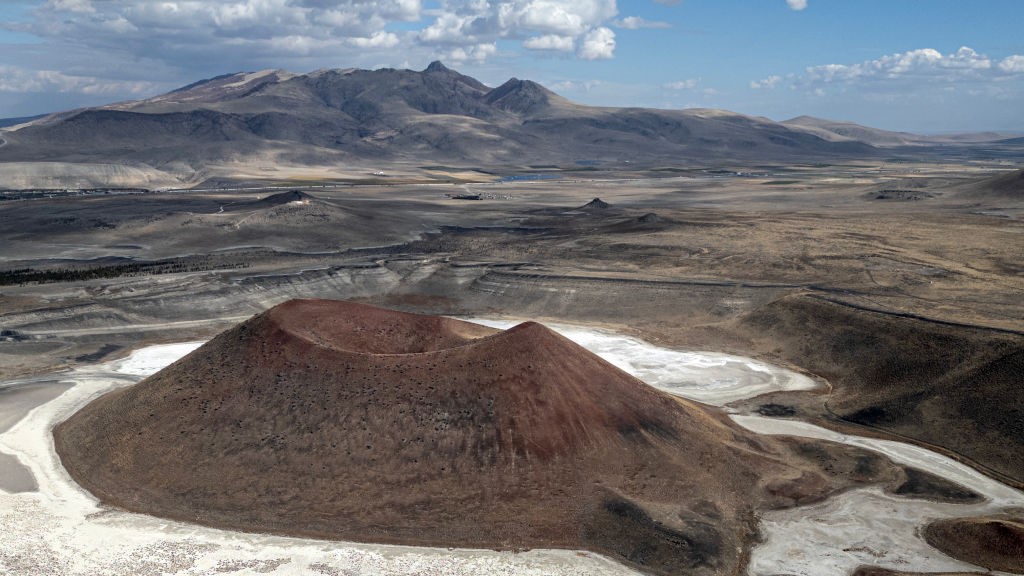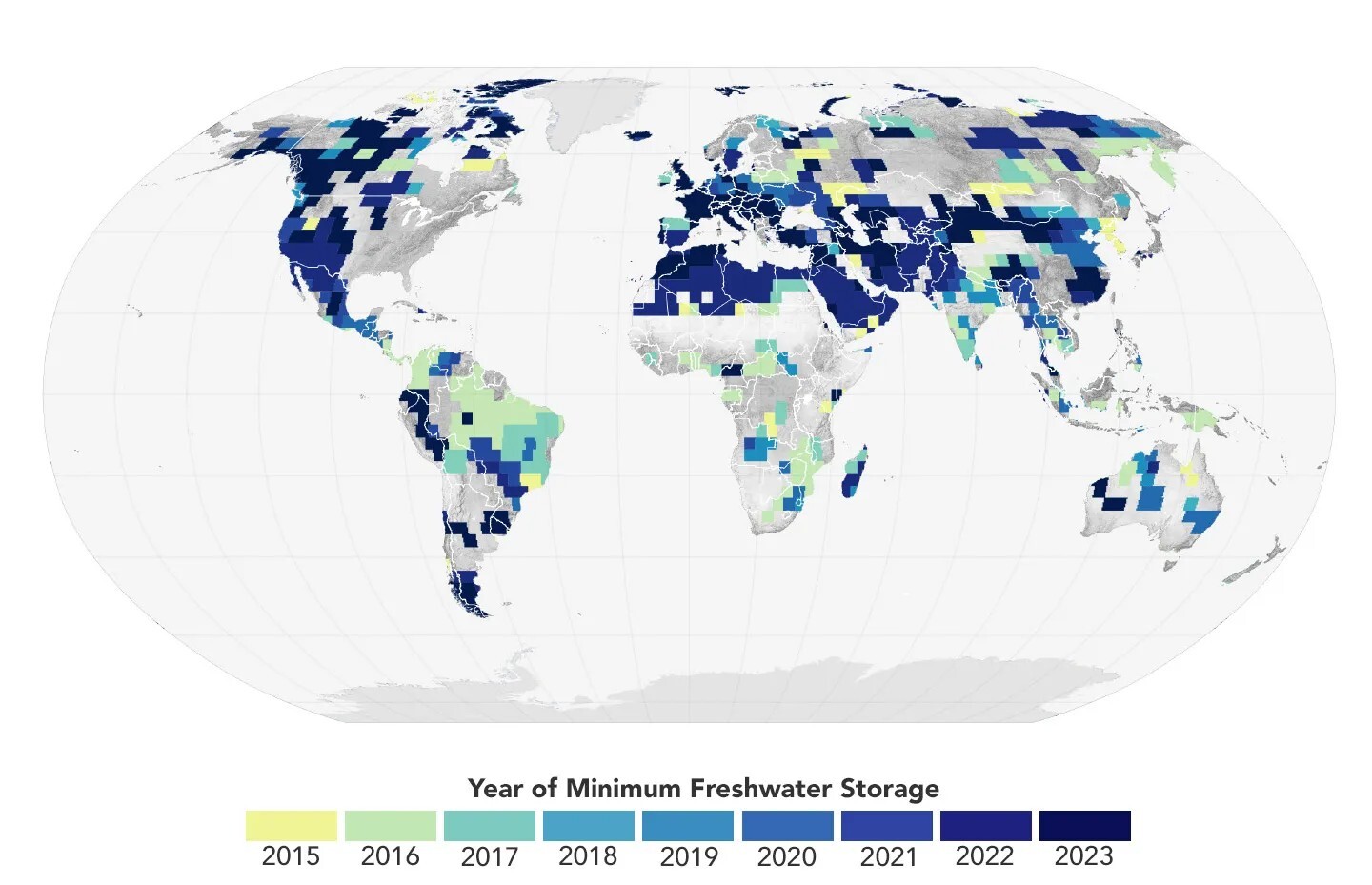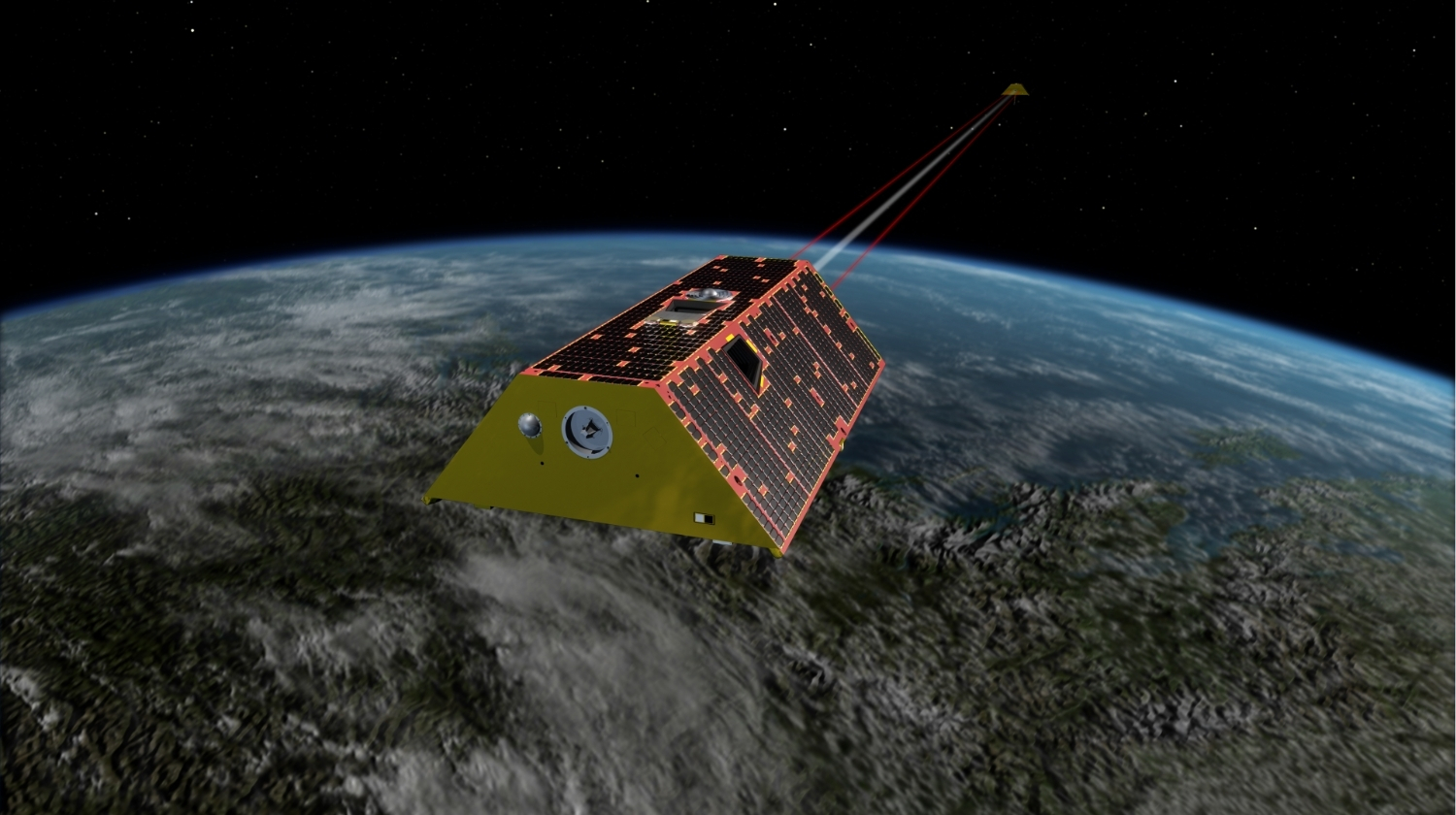
The amount of freshwater found on our planet has dropped significantly in the last decade, NASA satellites have found.
An international team of scientists reviewed observations taken by the Gravity Recovery and Climate Experiment (GRACE) satellites operated by NASA, the German Aerospace Center and the German Research Center for Geosciences. The data collected by GRACE revealed that beginning in May 2014, there was a plunge in Earth's freshwater supply, and the planet has still not recovered. The researchers suggest that this evidence could also mean Earth is undergoing a drier phase than normal.
GRACE satellites take monthly measurements of changes in Earth's gravity, which allows scientists to see if there's also a change in the concentration of water on the surface and underground. In GRACE satellite measurements taken between 2015 and 2023, the total amount of freshwater globally came in at 290 cubic miles (1,200 cubic kilometers).
"This includes liquid surface water like lakes and rivers, plus water in aquifers underground; this is lower than the average levels from 2002 through 2014," Matt Rodell, one of the study authors and a hydrologist at NASA's Goddard Space Flight Center in Greenbelt, Maryland, said in an agency statement. "That's two and a half times the volume of Lake Erie lost."
Related: NASA Is Tracking One of Earth's Most Valuable Resources — Water
During drought conditions, the need for groundwater increases greatly. Communities and farmers turn to freshwater stores, which can quickly run low without the assistance of precipitation. This could trigger a domino effect globally as water resources become limited, which can result in an increase in poverty, famine, conflicts, and increased disease from the usage of water sources that are contaminated.
According to the GRACE satellite data, 13 of the 30 most powerful droughts across the globe have taken place since January 2015. According to their research, northern and Central Brazil, Australasia, South America, North America, Europe, and Africa all experienced a massive drought, corresponding with a decline in freshwater globally. The researchers concluded that due to the extreme conditions and changes in weather patterns coinciding with these droughts, global warming could have played a huge role in this consistent dry period; the same time frame also includes nine of the warmest years on record in modern history.

"Global warming leads the atmosphere to hold more water vapor, which results in more extreme precipitation," Michael Bosilovich, a meteorologist at NASA Goddard, also said in the statement. "The problem when you have extreme precipitation is the water ends up running off instead of soaking in and replenishing groundwater stores. Warming temperatures increase both the evaporation of water from the surface to the atmosphere, and the water-holding capacity of the atmosphere, increasing the frequency and intensity of drought conditions."
But, even with the presented research, there are other scientists who are not sold entirely on the link between global warming and the freshwater depletion.

"There are uncertainties in climate predictions; measurements and models always come with errors," Susanna Werth, a hydrologist and remote sensing scientist at Virginia Tech not affiliated with the study, said in the statement.
Will the freshwater supply trend back upward again to levels before 2015? Researchers say it will be a waiting game to see what happens, but have some confidence that there's more dry days ahead across the planet.
"We don't think this is a coincidence," Rodell said. "It could be a harbinger of what's to come."
The researchers shared their findings in the journal Surveys in Geophysics.







